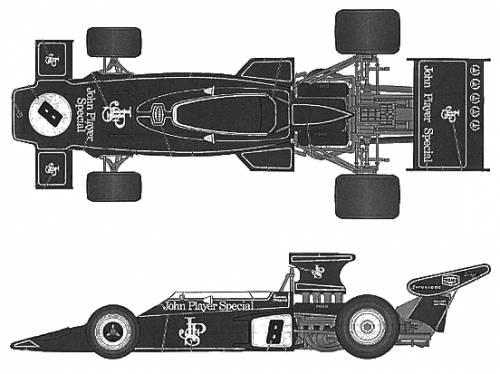JimboJones- Im afraid you're quite wrong. Ask any racing driver or engineer if they'd take wider tyres if they could have them, and they'd bite your hand off!
...er, I am a racing engineer, and whilst one will not be oracular on street tyres, one has some rather strong views on racing tyres. Last year Michelin was only supplying wider front tyres for the LMP1 at Le Mans, as requested by Audi and Toyota, whereas the rest of the privateer LMPs wanted to stay in the smaller size. There was an option of having 11 spec (front tyre sizes), but only in the old compounds. Audi had changed their weight distribution, plus had the electric motors on the front for the eTron, needing more capacity, so logical. Everybody else wanted to keep the sizes previously used as a good balance for aero loads and needs.
Changing the car to run these tyres involved a huge amount of work, new front bodywork, re-working aero for a different balance, more drag due to limited flow between the front wings, changing disk and pad sizes on the rear suspension due to brake balance issues, given that a bigger diameter and width of front tyres diminished disc tangential speed, thus changing rubbing speed and pad bite, which involved making new rear uprights and coping with an increased rolling resistance from the wider wheels. Front spring rate, damping and anti-roll bars had to be changed, as vertical stiffness rate of the bigger tyre was softer, which then brought in problems controlling ride height and increased issues with splitter touching ground under braking, not to mention CP change with pitch, as tyre spring rate ratio was changed.(Incidentally, tests with the windtunnel model using the new bodywork but with the original whee size showed that aero drag was mainly due to the tyre size despite being in the wheel well and not exposed to the air, as a single seater.) Ackerman, roll camber geometry and offset had to be changed, plus caster and kingpin angle, plus brake master cylinders just to cope with brake balance bias issue , consequence of the different disc radius and size.
One would be very happy to keep the original smaller size never mind bitting any hand. There is a huge amount of consequences on any tyre choice, not only size.
This year, on another championship, with another tyre manufacturer am obliged to run same tyres front and rear, giving me huge headaches to make the front end work, as lateral stiffness is less than the opposition, who run the smaller front tyres (and lower aspect ratio).
Why do we run bigger fronts? Because our weight distribution is biased to the front, as they are run in GT-3 and based on a production car, so what you get is what comes from the original car. With a high front weight, the smaller tyres are not rated to carry that much weight, and as they are spec tyres for the championship one has no choice in having either a smaller tyre with a higher rating, or a big tyre(same size as the rear) but with a different carcass so as to have a higher lateral stiffness for the same vertical.
The bodge solution is to run higher tyre pressures and ridiculous camber angles to ensure the contact patch in cornering (the bigger tyre and different aspect ratio with this construction means that side deflection is higher under a given load, so tyre wear is happening on outside shoulder and can be critical if you are trying to double stint the tyre set... and running the risk of blowing tyres on hot and fast circuits by cycling the inner walls (which at this point are carrying most of the load and consequently softer in vertical stiffness. Arghh...it's circular, and we will probably have to go back to first principles to explain adequately...sooo, deep breath....a tyre spring rate is consequence of the sidewall construction, and for a tyre rolling at zero camber both sidewall share the load. Increasing camber shifts the load to a single sidewall making for a softer tyre, and increasing the deflection cycling, making for a carcass that gives up earlier as the cords detach themselves from the embedded matrix of rubber and carcass, which then also generates a higher running temperature, which increases the pressure, which entails a different thread patch giving more crowning even with a belted tyre. More crowning then reduces the contact patch which in turn increases the area unit load vertically, longitudinally and laterally, which then increases the temperature and surface wear. The inner wheel in turn suffers by running an adverse camber, and drags the inner shoulder increasing the risk of blistering due to overheating, not to mention the problems of pickup...the bane of my life....)
And we are talking only of one part of it, as the softer carcass then entails problems in controlling rake under braking and acceleration, which in turn brings in aero load distribution issues. Getting tyres up to temperature for qualifying runs runs into huge problems in making front and rear tyres coming in at the same time and keeping car balanced36.
The same car run in another championship has bespoke tyres, with a correct carcass and is a lot easier to run.
Another prime example of practicalities comes from the start of 76 in F1, when front tyre carcass changed by going from 4 to 6 plies, consequence of safety concerns by the manufacturer, after Donohue's accident at Zeltweg, said tyres brought in after the Spanish grand prix, which instantly killed some leading contenders, amongst them Shadow and Lotus, which had optimised their weight distribution on the 75 tyres, and compounded by having most of the winter testing done by McLaren and Ferrari, more front biased cars. Note this not involve tyre size or aspect ratio, just carcass.
Hope this opens a bit the number of factors and issues given by tyre size and aspect ratio, one would be very careful about blanket statements. Bigger diameter or higher/lower aspect ratio is not all, neither is tyre width. Tyre material is a multi-layered, non-uniform, anisotropic cord-rubber composite and even trying to model it has severe problems, be it the elastic foundation model, the string model, the beam model or the brush model, thus the road and rig testing ends up being essential. Rubber is the ultimate non-linear material, plus temperature and load dependent.
Suggest reading Dixons' "Tyres, suspension and handling" (ISBN 0-340-67796-1), Haneys' "The Racing and High -performance Tire" (ISBN 0-7680-1241-4), Millikens' "Race Car Vehicle Dynamics" (ISBN 1-56091-526-9), Sakais' "Study on Cornering Proprieties of Tyre and Vehicule" TCTA -18(3) 1990, , Nordeen "Force and moment Characteristics of Rolling Tires " (SAE paper 713A), in fact there are a slew of SAE papers on it, just google SAE and tyres for a good coverage, and , of course the seminal "Tyre and Vehicle Dynamics" (ISBN 0-7506-5141-5) by Pacejka, although it is very heavy going, has been my bed-side book for a couple of decades and still trying to wrap my head around it.
(..er, one suspects this post a bit of an overkill...  )
)




















